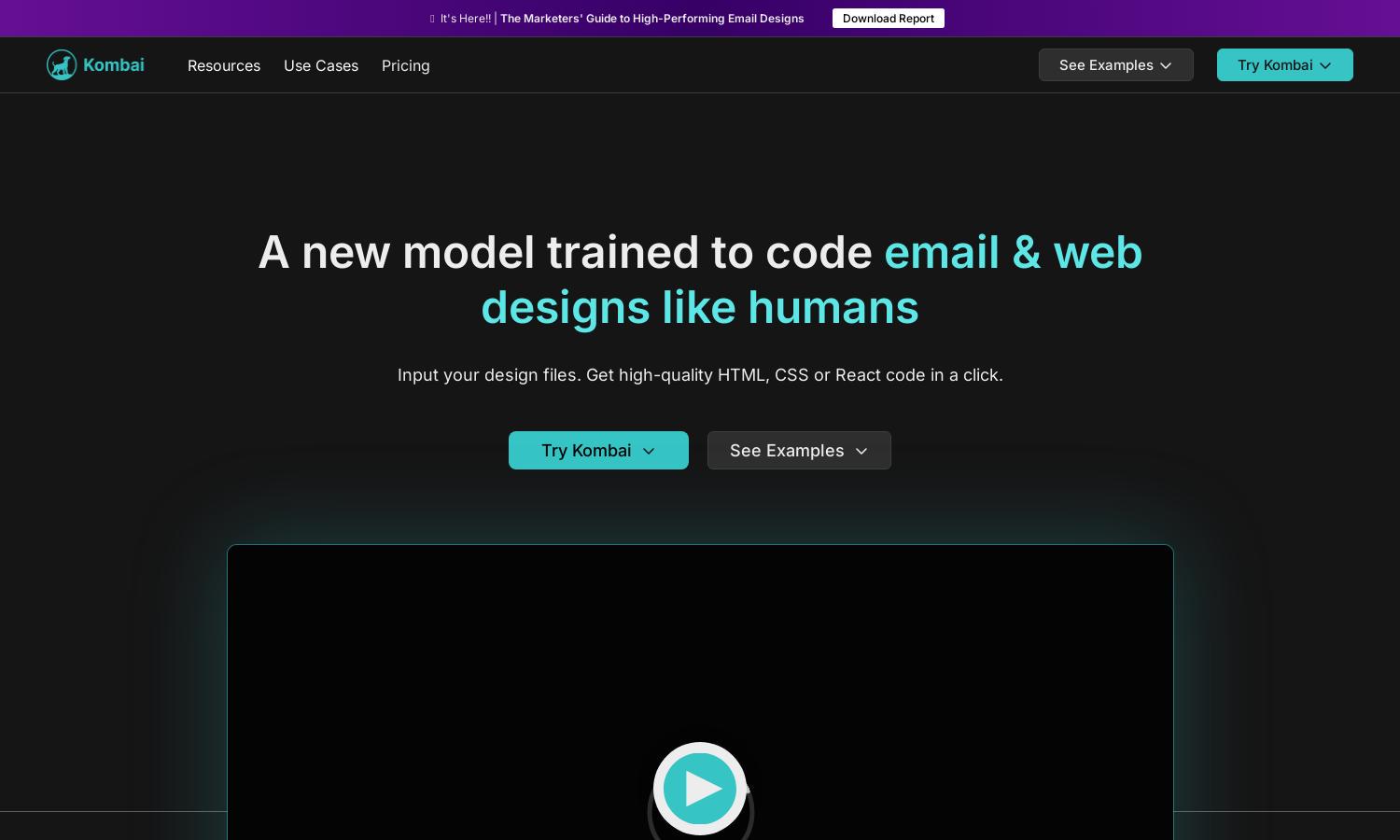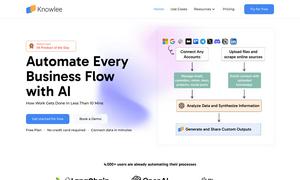Kombai

About Kombai
Kombai is an innovative platform designed for developers seeking efficient Figma to code conversion. With its unique AI-powered tool, users can input designs and receive high-quality HTML, CSS, or React code instantly. Kombai streamlines development, saving time and improving accuracy for modern front-end projects.
Kombai currently offers free access for individual developers as part of its public research preview. Users can explore its features without any cost, providing an invaluable opportunity for developers to enhance their workflow. There are plans for future pricing tiers to cater to wider audiences.
Kombai’s user interface is designed for seamless interaction, featuring intuitive navigation and easy access to tools. With a clean layout, users can efficiently input designs, receive generated code, and explore example projects. This user-friendly approach enhances the overall experience, making coding more enjoyable.
How Kombai works
To use Kombai, users begin by uploading their Figma design files to the platform. Kombai’s AI-powered engine analyzes the designs and generates high-quality HTML, CSS, or React code. Users can seamlessly navigate through the interface to view, modify, or regenerate the code as needed, optimizing their development workflow.
Key Features for Kombai
AI-Powered Code Generation
Kombai offers a unique AI-powered code generation feature that converts Figma designs into high-quality front-end code effortlessly. This innovative tool eliminates tedious manual coding, enabling developers to focus on more complex business logic and features, making Kombai an essential asset in modern web development.
Flexible Output Formats
Kombai stands out by providing flexible output formats, generating code in HTML, CSS, or React. Users can also customize their CSS output between vanilla CSS or Tailwind, ensuring compatibility with their preferred frameworks, and simplifying integration into various development workflows for enhanced efficiency.
Design Prompt Engineering
Kombai includes a distinct feature called "design prompt engineering," allowing users to refine their inputs for better code generation. By optimizing prompts, users can steer the AI to produce code that aligns more closely with their desired specifications, significantly improving the accuracy and usability of the generated output.
You may also like:








